Introduction To Bangladesh: A Multifaceted Country
Bangladesh is a land of mesmerizing beauty and diversity. The country is located in South Asia and is bordered by India, Myanmar, and the Bay of Bengal. The unique geographical location of the country has contributed greatly to its rich culture and heritage. Bangladesh is a country with a mixed and diverse population. The people here are friendly, welcoming, and deeply rooted in their culture and traditions.
The history of Bangladesh dates back to ancient times. The country has seen a lot of changes over the years, from being ruled by various empires to gaining independence in 1971. Today, Bangladesh is a rapidly developing country that has become a hub for trade and commerce in South Asia. The country is known for its vibrant economy and is home to a number of thriving industries.
One of the most striking features of Bangladesh is its natural beauty. The country is blessed with a diverse landscape that includes rivers, mountains, forests, and beaches. Some of the top destinations to visit in Bangladesh include Cox’s Bazar, Sundarbans, Srimangal, and Jaflong. These places are known for their natural beauty and are a must-visit for anyone traveling to Bangladesh.
- Cox’s Bazar – the longest beach in the world
- Sundarbans – the largest mangrove forest in the world
- Srimangal – the tea capital of Bangladesh
- Jaflong – the land of hills and waterfalls
Another major attraction in Bangladesh is its vibrant capital city, Dhaka. The city is a melting pot of cultures and traditions and is known for its bustling streets, colorful markets, and delicious street food. Chittagong, on the other hand, is the commercial hub of Bangladesh and is home to some of the largest industries in the country.
Bangladesh is a country steeped in culture and tradition. The people here are deeply religious, and this is reflected in their everyday life. The country is also home to a number of UNESCO World Heritage Sites, including the ancient city of Paharpur and the sacred city of Puthia. These sites are a testament to the rich history and heritage of the country.
| City | Attraction |
|---|---|
| Sylhet | A city of saints and mystics |
| Rangpur | The land of oranges and scenic beauty |
| Sonargaon | A glimpse of rural life in Bangladesh |
Overall, Bangladesh is a multifaceted country with unlimited opportunities for travelers and explorers. Whether you are interested in exploring the country’s rich culture and heritage, enjoying its natural beauty, or simply experiencing its warm and welcoming hospitality, Bangladesh has something for everyone. So, come and explore this beautiful country and discover all that it has to offer.

The History And Culture Of Bangladesh
Bangladesh is often referred to as a land of diversity, and rightly so. It is a country that is steeped in history and culture, with a blend of ethnicities, religions, and languages that make it a truly multifaceted land. In this blog post, we will take a deep dive into the history and culture of Bangladesh, exploring the various influences that have shaped this unique country.
Set in the north-east of South Asia, Bangladesh has a history that dates back to the 8th century, when it was known as the Pala Empire. Over the centuries, the country has been ruled by a number of different empires and dynasties, including the Mughals and the British. These influences have had a significant impact on the country’s history and culture, shaping the way that Bangladeshis live, work, and worship today.
One of the most striking aspects of Bangladesh’s culture is its rich artistic heritage. The country is known for its traditional folk music and dance, as well as its vibrant visual arts scene. From intricate embroidery to colorful paintings and sculptures, Bangladesh’s artistic culture is truly one of a kind. Traditional crafts such as weaving, pottery, and basket-making are also an integral part of the country’s cultural identity.
- Must Read: The Striking Natural Beauty Of Bangladesh: Top Destinations To Visit.
- Must Read: Discover Dhaka: The Vibrant Capital City Of Bangladesh.
Bangladesh is also home to a number of important religious sites, including mosques, temples, and shrines. The country’s rich spiritual heritage is reflected in its festivals and celebrations, which are marked by colorful processions, feasting, and music. Some of the most important festivals in Bangladesh include Eid al-Fitr, Durga Puja, and Christmas.
Despite the many challenges that Bangladesh has faced over the years, including natural disasters, political instability, and poverty, the country’s people have remained resilient and proud of their history and culture. Today, Bangladesh is a rapidly developing country that is home to a thriving technology industry and a growing middle class. The future looks bright for this multifaceted land, with unlimited opportunities for growth and prosperity.
| Quick Tips: |
|---|
| Tip #1: To truly appreciate Bangladesh’s culture, make sure to sample the country’s delicious cuisine, which includes dishes such as biryani, daal, and fish curry. |
| Tip #2: If you’re interested in history, make sure to visit some of Bangladesh’s many archaeological sites, such as the ancient city of Paharpur. |
| Tip #3: Bangladesh is a great place to shop for unique handicrafts and souvenirs, such as hand-painted silk scarves and wooden toys. |
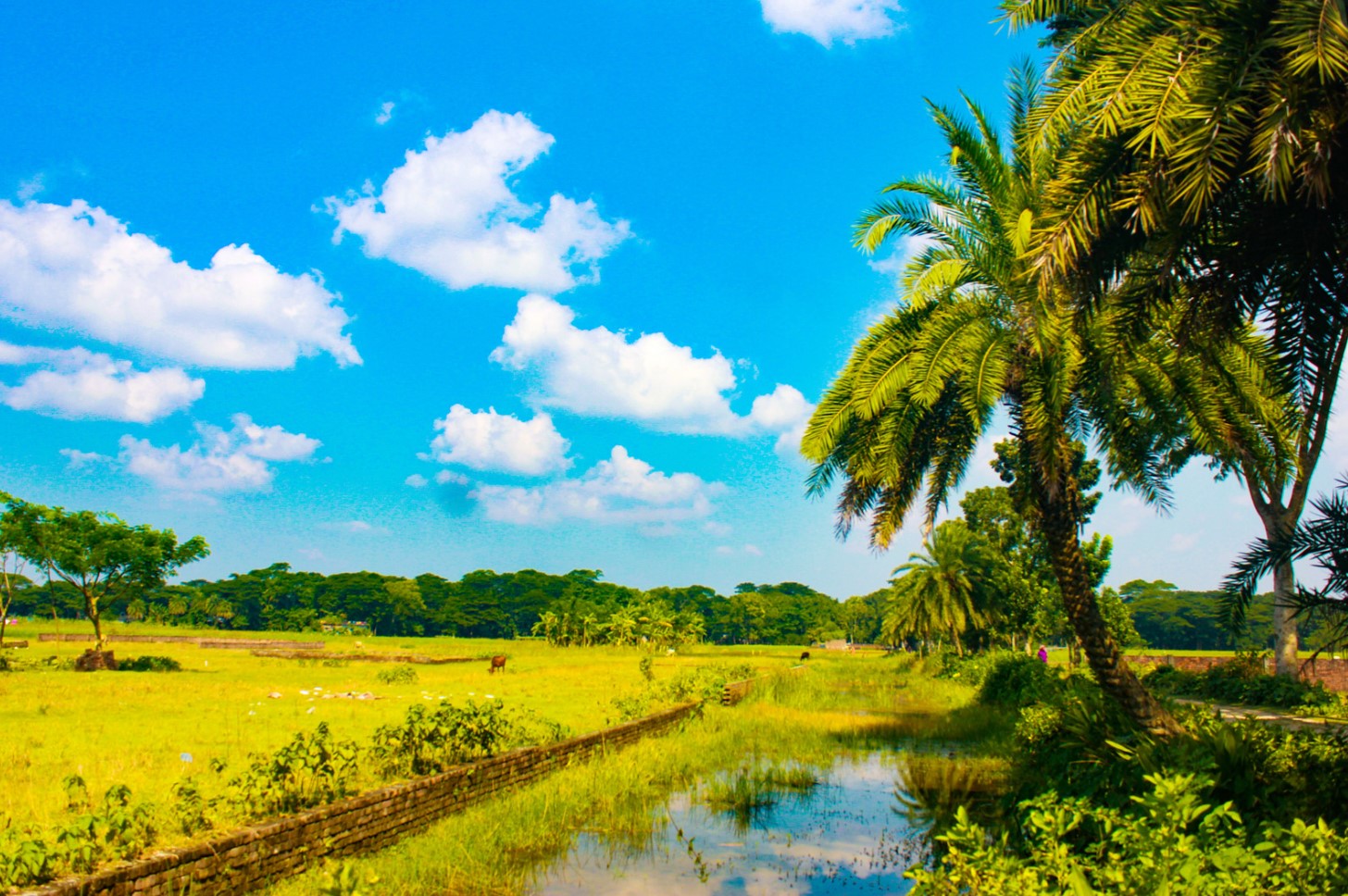
The Striking Natural Beauty Of Bangladesh: Top Destinations To Visit
When it comes to natural beauty, Bangladesh is undoubtedly a hidden gem waiting to be discovered. From the majestic hills to the serene beaches, Bangladesh is home to some of the most awe-inspiring natural wonders in the world. If you’re planning a trip to Bangladesh, make sure to add these top destinations to your itinerary for an experience of a lifetime.
- Cox’s Bazar Beach: Known as the longest natural beach in the world, Cox’s Bazar is a popular destination for both locals and tourists. With its crystal-clear water and picturesque views, this beach is perfect for swimming, sunbathing or just relaxing.
- Sundarbans: As the world’s largest mangrove forest, the Sundarbans is a UNESCO World Heritage site that should not be missed. It’s the natural habitat of the Bengal tiger and offers a unique opportunity to witness these majestic animals in their natural environment.
- Rangamati Hill District: Located in the Chittagong Hill Tracts, the Rangamati Hill District is a popular destination for hiking and trekking enthusiasts. With its lush green hills and pristine lakes, it’s a perfect getaway from the hustle and bustle of city life.
Bangladesh is also home to a number of national parks and wildlife sanctuaries, such as Lawachara National Park and Teknaf Wildlife Sanctuary, which offer a chance to explore the country’s diverse flora and fauna. Additionally, the country is dotted with numerous waterfalls, including the breathtaking Jaflong waterfall, which is surrounded by verdant hills and tea plantations.
When it comes to natural beauty, Bangladesh has a lot to offer. From idyllic beaches to dense forests and scenic hills, the country is truly a paradise for nature lovers. So, pack your bags and head off to these top destinations in Bangladesh for an unforgettable experience!
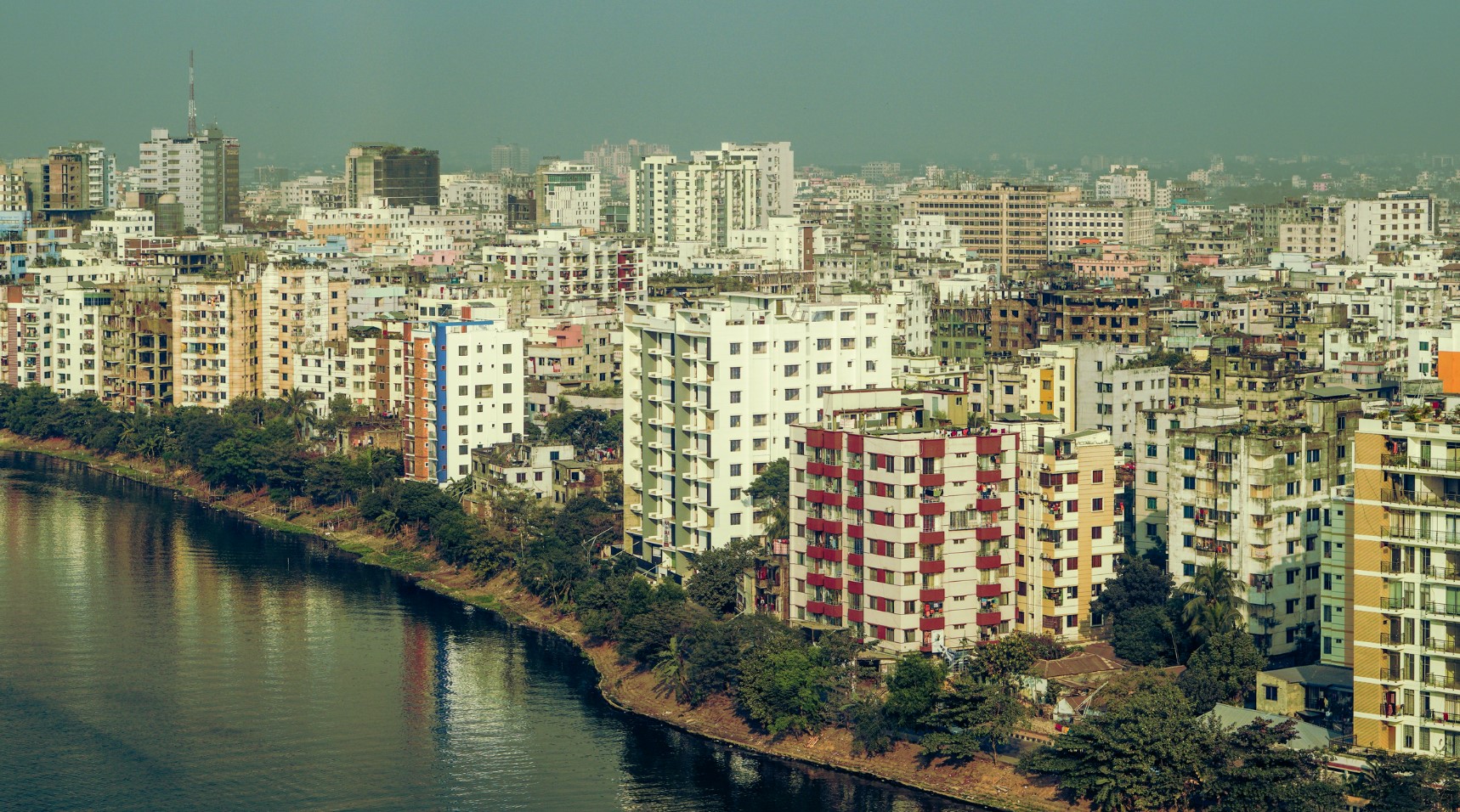
Discover Dhaka: The Vibrant Capital City Of Bangladesh
Bangladesh’s capital city, Dhaka, is a bustling, colorful and an endlessly fascinating metropolis. Located in the heart of the country, Dhaka is a city of stark contrasts, where you’ll find rickshaws hustling for space amongst luxurious cars, traditional markets and shopping malls standing side by side and ancient mosques and temples alongside modern skyscrapers. As one of the fastest growing, vibrant and dynamic cities in the world, Dhaka is sure to be an experience you’ll never forget.
One of the most intriguing things about Dhaka is its rich history and culture, evident everywhere you go. Home to over 15 million people, the city was founded in the 17th century and has since been governed by the Mughals, the British and Pakistan before gaining independence in 1971. This tumultuous past has left an indelible mark on the city, resulting in a wonderful mixture of architectural styles, with traces of the old city still visible around every corner.
The streets of Dhaka are a sensory overload, filled with the sounds of blaring horns and the smells of delicious street food. If you’re a foodie, you’ll be in heaven here. From the famous biryani to the sweeter side of things like mishti doi and roshogolla, Dhaka has an array of tantalizing and mouth-watering food experiences to offer.
- If you’re interested in exploring the history and culture of the city, you won’t be disappointed. Dhaka boasts a plethora of museums, galleries and landmarks for you to explore. Visit Ahsan Manzil, the former residence of the Nawabs of Dhaka or Lalbagh Fort, a Mughal-era fort and UNESCO World Heritage site.
- For those looking for a more cosmopolitan experience, the city’s shopping scene is second to none. Dhaka is home to several high-end malls with an amazing array of stores ranging from international brands to local boutiques.
- If you’re looking to escape the frenetic pace of the city, the natural beauty that surrounds Dhaka is breathtaking. Take a trip to the nearby Srimangal tea estates, go birdwatching at the Jahangirnagar University or explore the nearby rivers via riverboat.
If you’re planning a trip to Bangladesh, make sure Dhaka is on your itinerary. This city is unlike any other, with its bustling streets, incredible food, rich history and culture and an endless array of sights and sounds. Discover Dhaka and immerse yourself in a city that will leave a lasting impression on your travel memories.
Chittagong: The Commercial Hub Of Bangladesh
Chittagong is the second-largest city in Bangladesh and is known as the country’s commercial hub. Located on the southeastern coast, it is the gateway to the Bay of Bengal and plays a vital role in the country’s economy. The city has a rich history and is home to various cultural landmarks that reflect its maritime past.
The Port of Chittagong, one of the busiest ports in South Asia, serves as a major factor in the city’s commercial success. The port handles more than 90% of Bangladesh’s international trade, making it a crucial center for economic activities. Additionally, Chittagong is a significant location for the heavy industry sector, such as shipbuilding, steel production, and petroleum refining.
The city also offers various tourist attractions, such as the Ethnological Museum, which has a vast collection of artifacts that showcase the diversity of Bangladesh’s ethnic groups. The Chittagong Commonwealth War Cemetery, which commemorates the lives of the soldiers who died during the Second World War, is a popular destination for history enthusiasts.
- In conclusion, Chittagong is a bustling commercial hub that plays a critical role in Bangladesh’s economy. The city’s port and heavy industry sector provide significant contributions, while its cultural landmarks and tourist attractions make it a place worth visiting.
| Pros of Chittagong | Cons of Chittagong |
|---|---|
| 1. Booming economy and a vast industrial sector. | 1. Heavy traffic congestion can be a hindrance to some people. |
| 2. Cultural landmarks and historical sites. | 2. Environmental degradation and pollution. |
| 3. Tourist attractions and breathtaking scenery. | 3. Lack of proper infrastructure and amenities in some areas. |

Sundarbans: The Largest Mangrove Forest İn The World
The Sundarbans is the largest mangrove forest in the world, located in the delta of the Ganges, Brahmaputra, and Meghna rivers, extending from Bangladesh to India. It is a UNESCO World Heritage Site and a Ramsar Wetland of International Importance. The Sundarbans is a unique ecosystem that is home to the iconic Bengal tiger, estuarine crocodiles, Gangetic dolphins, and many other species of flora and fauna.
The Sundarbans, also known as the Bangladesh Sundarbans, covers an area of about 10,000 km2, of which 60% is in Bangladesh and 40% in India. The forest is named after the Sundari trees, which are dominant in the region. The forest has a complex network of tidal waterways, small islands, and mudflats that are constantly changing with the tides.
- Top Attractions:
- The Royal Bengal Tiger: The Sundarbans is one of the few places in the world where you can see the Bengal tiger in the wild. There are about 400 tigers in the Sundarbans, which have adapted to swim in the saline water in search of prey.
- The Estuarine Crocodile: The Sundarbans is home to the largest population of estuarine crocodiles in the world, numbering about 5000. These crocodiles are dangerous and can grow up to 23 feet in length.
- The Mangrove Trees: The Sundarbans has 26 species of mangrove trees which have adapted to grow in the saline water, with their roots extending above the water level in a complex network.
The Sundarbans is not just a natural wonder, but also a source of livelihood for thousands of people who live in and around the forest. The forest provides fish, honey, timber, and other resources to the local communities. However, the forest is also under threat from human activities such as poaching, logging, and oil spills.
| Best time to visit: | The best time to visit the Sundarbans is between November and March when the weather is dry and cool. The summers can be hot and humid, and the monsoons can be unpredictable. |
|---|---|
| How to reach: | The Sundarbans can be reached by air, train, or road. The nearest airport is Kolkata in India, which is about 100 km from the forest. The nearest railway station is Canning in India, which is about 45 km from the forest. From there, you can take a boat or a bus to reach the forest. |
In conclusion, the Sundarbans is a unique ecosystem that is not only a natural wonder but also a source of livelihood for thousands of people. It is a must-visit destination for nature lovers and those who want to experience the beauty and diversity of the natural world.
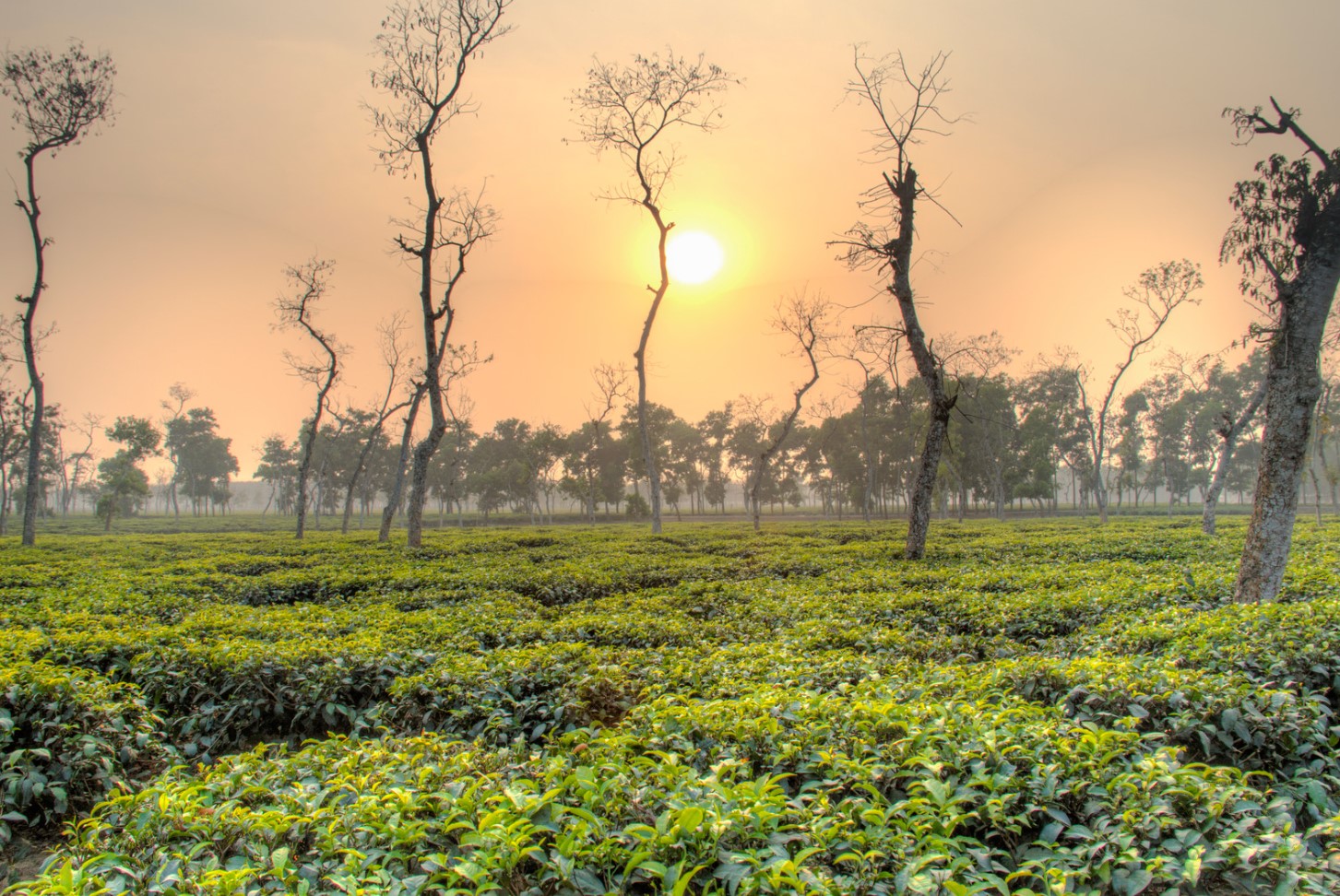
Srimangal: The Tea Capital Of Bangladesh
Srimangal, located in the north-eastern part of Bangladesh, is a small town that is often referred to as the ‘Tea Capital of Bangladesh’. The town is known for its lush green tea gardens, scenic landscapes, and tranquil atmosphere. Srimangal is the home of the country’s largest tea gardens, which are spread over vast areas and produce some of the best teas in the world. The town is also renowned for its national parks, wildlife sanctuaries, and scenic waterfalls, making it a popular tourist destination in Bangladesh.
If you are a tea lover, then Srimangal is a must-visit place for you. The town has several tea gardens, each with its unique flavor and aroma. The tea plantations in Srimangal are open to visitors, and you can take a guided tour to learn about the tea-making process, from the plucking of the tea leaves to the packaging of the finished product. You can also sample some of the teas and purchase your favorite ones at the tea stalls on the premises.
- The most popular tea gardens in Srimangal are:
- Madhabpur Tea Garden
- Lauwakhet Tea Garden
- Juri Tea Garden
- Lawachara Tea Garden
- Finlay Tea Estate
Aside from the tea gardens, Srimangal also boasts several national parks and wildlife sanctuaries. The Lawachara National Park is one of the famous attractions you should not miss. It’s home to an extensive collection of flora and fauna, including the critically endangered hoolock gibbons, which is considered to be one of the rarest primates in the world. The park also has several trekking trails that lead you to natural waterfalls and streams.
| Destination | Distance from Srimangal town |
|---|---|
| Bangladesh Tea Research Institute (BTRI) | 1 km |
| Lawachara National Park | 10 km |
| Birisiri Hill | 15 km |
| Panthumai Waterfall | 20 km |
| Ratargul Swamp Forest | 30 km |
If you’re looking for a peaceful and serene environment, surrounded by natural beauty, then Srimangal should definitely be on your list of places to visit in Bangladesh. With its tea gardens, wildlife sanctuaries, and scenic waterfalls, Srimangal offers an unforgettable experience that captures the essence of Bangladesh’s natural beauty.
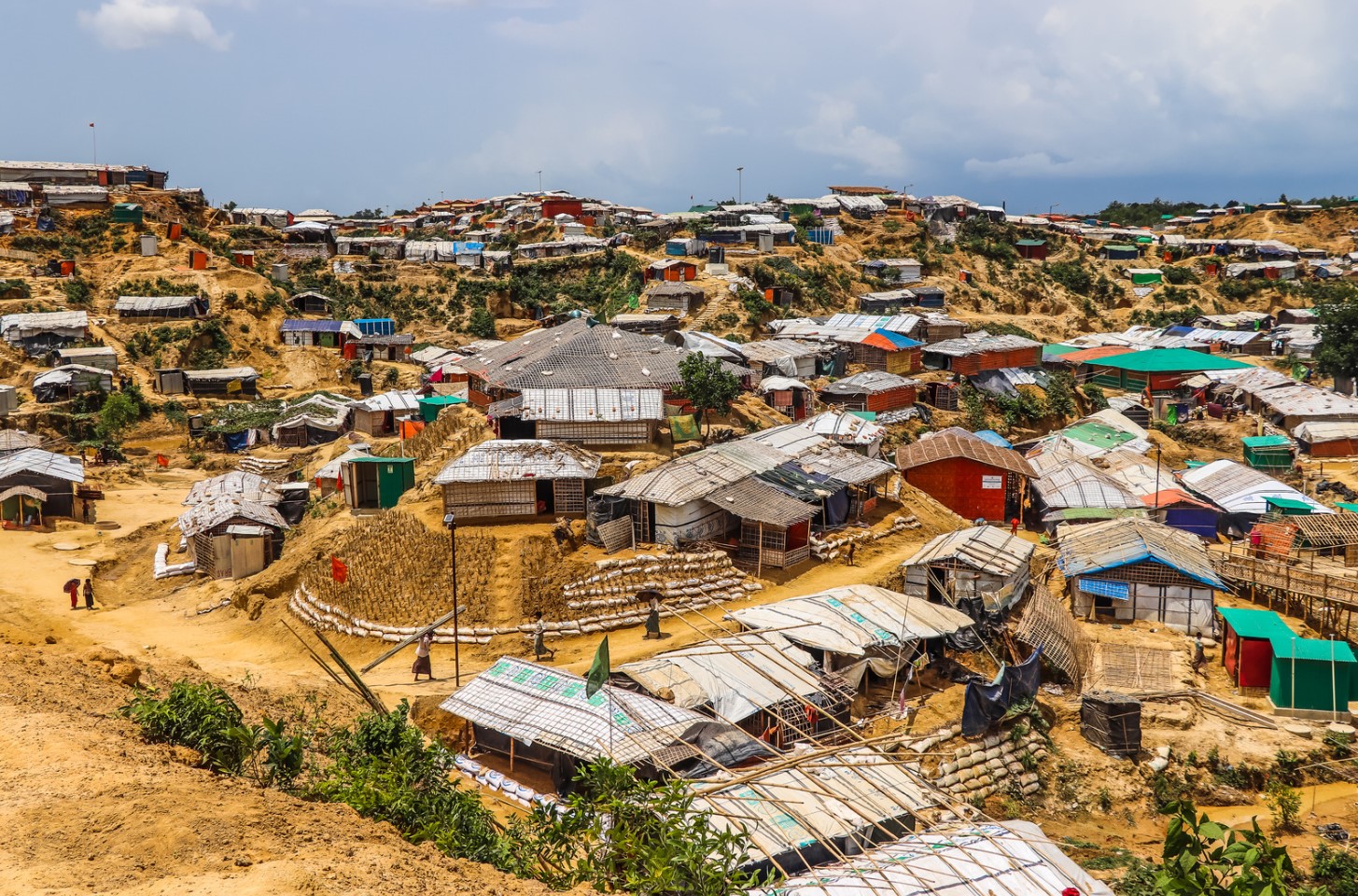
Cox’s Bazar: The Longest Beach İn The World
Cox’s Bazar is a small town located in the southeastern part of Bangladesh which is known for having the longest beach in the world. With a total length of 120 km, the beach is a major attraction for locals and tourists alike. The town itself is situated in the Chittagong division and is a popular destination for those looking to relax and unwind by the sea.
Not only is Cox’s Bazar home to the world’s longest beach, but it also has a rich cultural history. The town was named after Captain Hiram Cox, a British East India Company officer who administered the area in the 18th century. During World War II, Cox’s Bazar was used by the Allied Forces as a supply base and transit point. The town was also a center of trade between India and Burma during colonial times.
- There are plenty of activities to do while visiting Cox’s Bazar, such as:
- Swimming and sunbathing on the beach
- Visiting the Himchori and Inani Beaches nearby
- Exploring the local markets and trying traditional Bangladeshi cuisine
- Taking a stroll down Kolatoli Road, which is known for its nightlife and street food scene
If you’re interested in learning more about the natural landscape and wildlife in the area, a visit to the Himchari National Park is a must. The park is home to numerous waterfalls, hiking trails, and wildlife such as monkeys, deer, and various bird species.
| Best Time to Visit Cox’s Bazar | Weather Conditions |
|---|---|
| October to March | Mild temperatures and sunny weather, ideal for beach activities |
| April to September | Hot and humid, with frequent rain showers |
Cox’s Bazar has a unique charm that attracts many visitors each year. Whether you’re looking for a relaxing beach vacation or an adventure in nature, this town has something for everyone. With its stunning coastline, rich cultural heritage, and friendly locals, you’re sure to have a memorable experience in Cox’s Bazar.
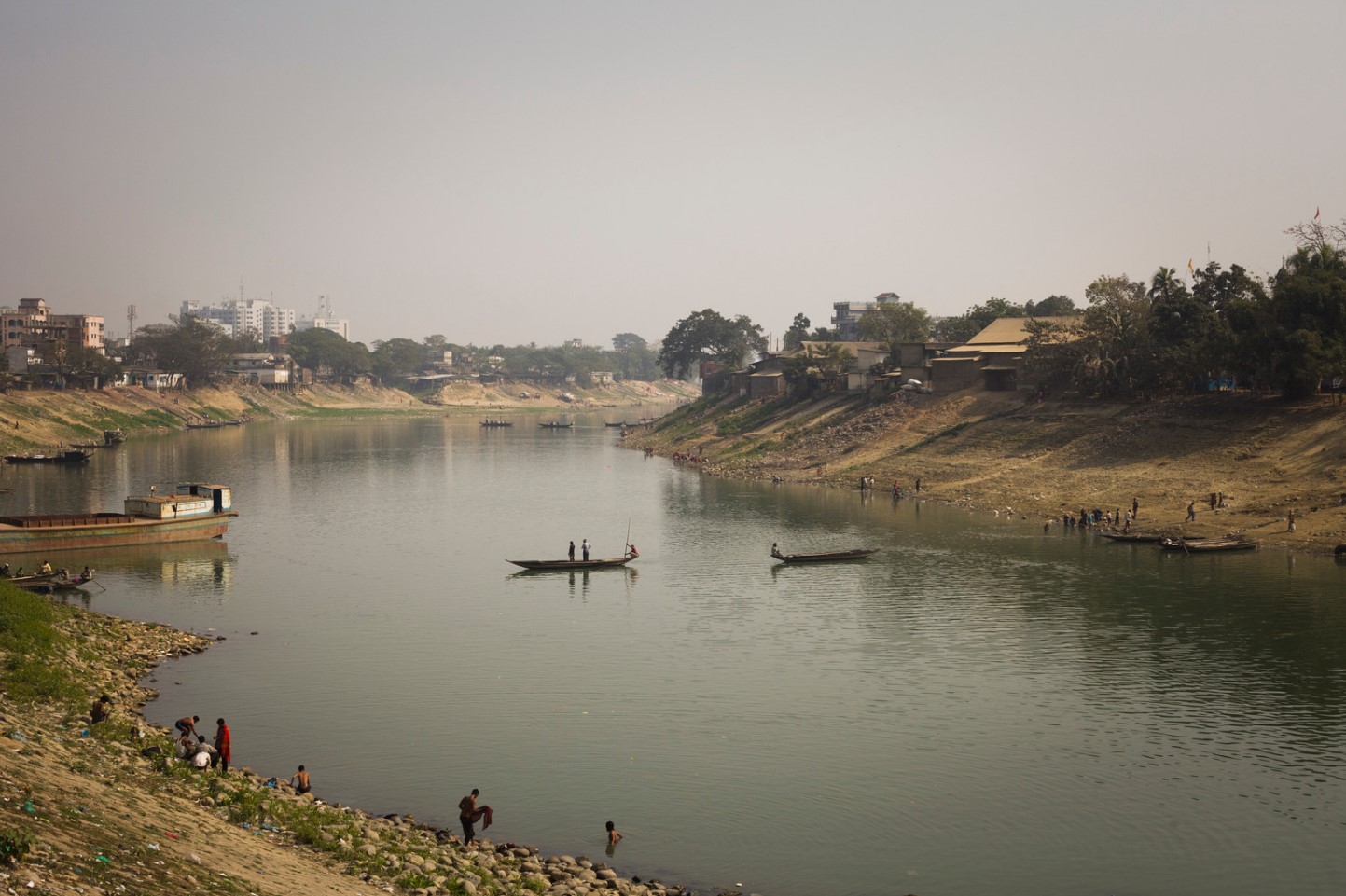
Sylhet: A City Of Saints And Mystics
Sylhet, a city located in the northeastern part of Bangladesh, is known for its rich cultural heritage and natural beauty. The city is home to numerous mosques, shrines, and mausoleums, that attract thousands of visitors every year. Sylhet has a strong connection to Sufism, an Islamic mystical tradition, and is considered the spiritual center of Bangladesh. The city is a melting pot of different cultures and religions, and this diversity is reflected in its architecture, food, and people.
Sylhet has a rich history that dates back to the 14th century. The city was ruled by the Sultans of Bengal, and later by the Mughals. The British also had a significant influence on Sylhet, and it was an important center for the tea trade during colonial times. Today, Sylhet is one of the most rapidly developing cities in Bangladesh, with modern infrastructure and amenities.
One of the main attractions of Sylhet is the Shrine of Hazrat Shah Jalal, a 14th century Sufi saint who is revered by both Muslims and Hindus. The shrine attracts millions of devotees every year, who come to pay their respects and seek blessings. Another popular shrine in Sylhet is the Shrine of Shah Paran, another Sufi saint who is believed to have supernatural powers.
- The Keane Bridge is a popular spot for tourists, offering stunning views of the Surma River.
- The Lawachara National Park is home to numerous species of flora and fauna, including several rare and endangered species.
- The Jaflong Valley, located at the base of the Khasia-Jaintia Hills, is famous for its rolling hills, waterfalls, and natural beauty.
The city of Sylhet is also famous for its food. The local cuisine is a fusion of Indian and Bangladeshi flavors, and is known for its spicy and flavorful dishes. Some popular dishes in Sylhet include doi chira (yogurt with flattened rice), pitha (rice cakes), and shatkora curry (a sour and tangy curry made with citrus fruits).
Overall, Sylhet is a city full of surprises and hidden gems. Its unique blend of culture, religion, and history, combined with its stunning natural beauty, makes it a must-visit destination for anyone traveling to Bangladesh.
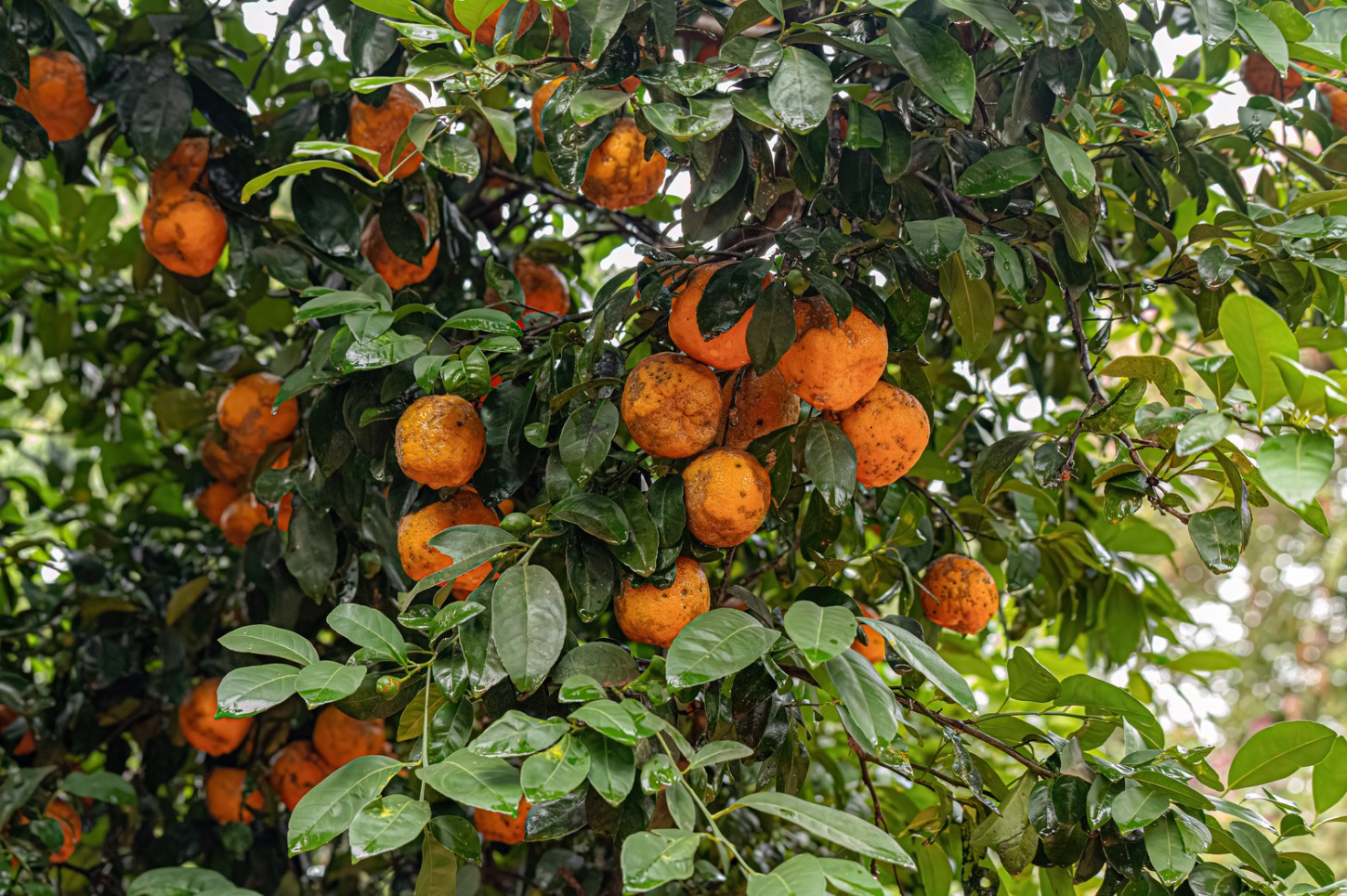
Rangpur: The Land Of Oranges And Scenic Beauty
Rangpur is a city known for its vast orange orchards and enchanting scenic beauty. It is located in the northern part of Bangladesh and is bordered by the Indian state of West Bengal. The city is blessed with abundant natural resources that make it a paradise for nature lovers. It is also renowned for the production of oranges, which are exported to many countries around the world.
The orange orchards in Rangpur cover a vast area and are a major source of income for the local people. The oranges grown here are juicy and full of flavor, making them a favorite among fruit lovers. In addition to oranges, Rangpur is also known for producing high-quality citrus fruits such as lemons and limes.
- The city of Rangpur has many tourist attractions that attract visitors from all over the world.
- The Tajhat Palace is a famous heritage site that showcases the architectural brilliance of the 19th century.
- The Rangpur Zoo is home to a range of exotic animals and is a popular spot for family outings.
- The Begum Rokeya Museum is a tribute to one of Bangladesh’s most celebrated female writers and social reformers, Begum Rokeya.
- Other notable attractions include the Carmichael College, the BGB Museum, and the City Park.
| Weather conditions in Rangpur | Best time to visit |
|---|---|
| The weather in Rangpur is generally pleasant throughout the year. However, the best time to visit is during the winter season, which lasts from November to February. | The winter season in Rangpur is characterized by cool and pleasant weather, with temperatures ranging from 10°C to 25°C. This is the perfect time to explore the city’s beautiful orange orchards and take in its scenic beauty. |
Overall, Rangpur is a city that offers a unique combination of natural beauty, cultural richness, and historical significance. Whether you’re a nature lover, a history buff, or simply looking for an escape from the hustle and bustle of city life, Rangpur has something for everyone. So, why not plan a trip to this beautiful city and experience its magic for yourself?
The Ancient City Of Paharpur: A UNESCO World Heritage Site
The Ancient City of Paharpur is a UNESCO World Heritage Site located in the northwest part of Bangladesh. This site holds great significance for its archaeological and historical value. Paharpur was the center of Buddhist learning in ancient times and was the largest Buddhist monastery south of the Himalayas. This ancient city was founded during the eighth century and continued to function as a center of learning and commerce for about four centuries.
Visitors to Paharpur will find many fascinating things to see and learn. The ruins of the monastery are spread over a vast area of the land where visitors can explore the temple complex, monastic cells, shrines, votive stupas, and a number of other structures. The main temple-based on a solid stone plinth is surrounded by hundreds of small votive stupas. The temple measures approximately 21 meters in height and is surrounded by a wall with entrances on the north and south sides.
- Don’t miss out on seeing the temple museum where visitors can have a glimpse of the site’s rich archaeological artifacts.
- Take a guided tour to learn about the history and significance of the site.
- Be sure to wear comfortable shoes as there is a lot of walking involved.
Visiting Paharpur can be a truly unique and enlightening experience. It provides a great opportunity to explore the history and culture of Bangladesh.
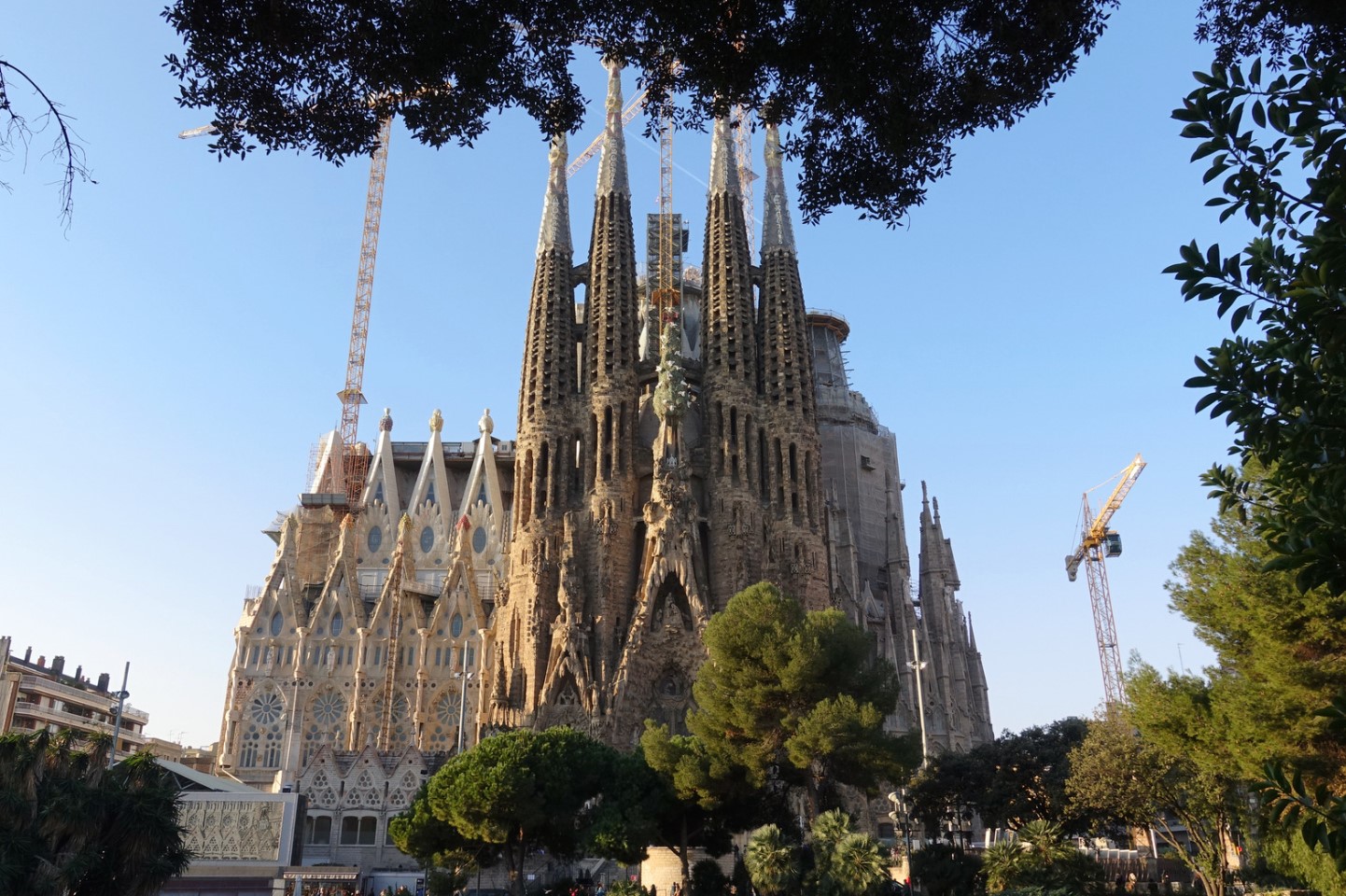
The Sacred City Of Puthia: A Treasure Trove Of Temples
Bangladesh is a country that is steeped in history and culture, and nowhere is this more apparent than in the Sacred City of Puthia. This city is often referred to as a treasure trove of temples, and it is not hard to see why. The temples in Puthia are some of the oldest and most beautiful in the world, and they provide a glimpse into the rich cultural heritage of Bangladesh.
One of the most famous temples in Puthia is the Shiva Temple. This temple is a stunning example of Hindu architecture, and it is known for its intricate carvings and stunning sculptures. Another important temple in Puthia is the Jagannath Temple, which is dedicated to Lord Vishnu. Visitors to this temple can witness sacred rituals and ceremonies that have been performed for centuries.
- Aside from the temples, there are many other attractions in Puthia.
- One of the most popular is the Puthia Palace, which was built in the 19th century by a local zamindar (landlord).
- Visitors to the palace can explore its sprawling gardens and enjoy the beautiful architecture.
Another must-see attraction in Puthia is the Kali Temple. This temple is dedicated to the goddess Kali, and it is known for its colorful artwork and intricate carvings. Visitors to the temple can witness traditional dance performances and other cultural events.
| Temple | Location | Description |
|---|---|---|
| Shiva Temple | North-western side of Puthia Palace | Stunning example of Hindu architecture, known for its intricate carvings and stunning sculptures |
| Jagannath Temple | North-western side of Shiva Temple | Dedicated to Lord Vishnu, visitors can witness sacred rituals and ceremonies |
| Kali Temple | Adjacent to the Puthia Palace | Dedicated to the goddess Kali, known for its colorful artwork and intricate carvings |
In addition to its rich cultural heritage, Puthia is also known for its picturesque landscapes and natural beauty. Visitors can explore the local countryside and enjoy the fresh air and stunning scenery. Whether you are a history buff or simply looking for a peaceful escape from the hustle and bustle of city life, Puthia is a destination that should not be missed.
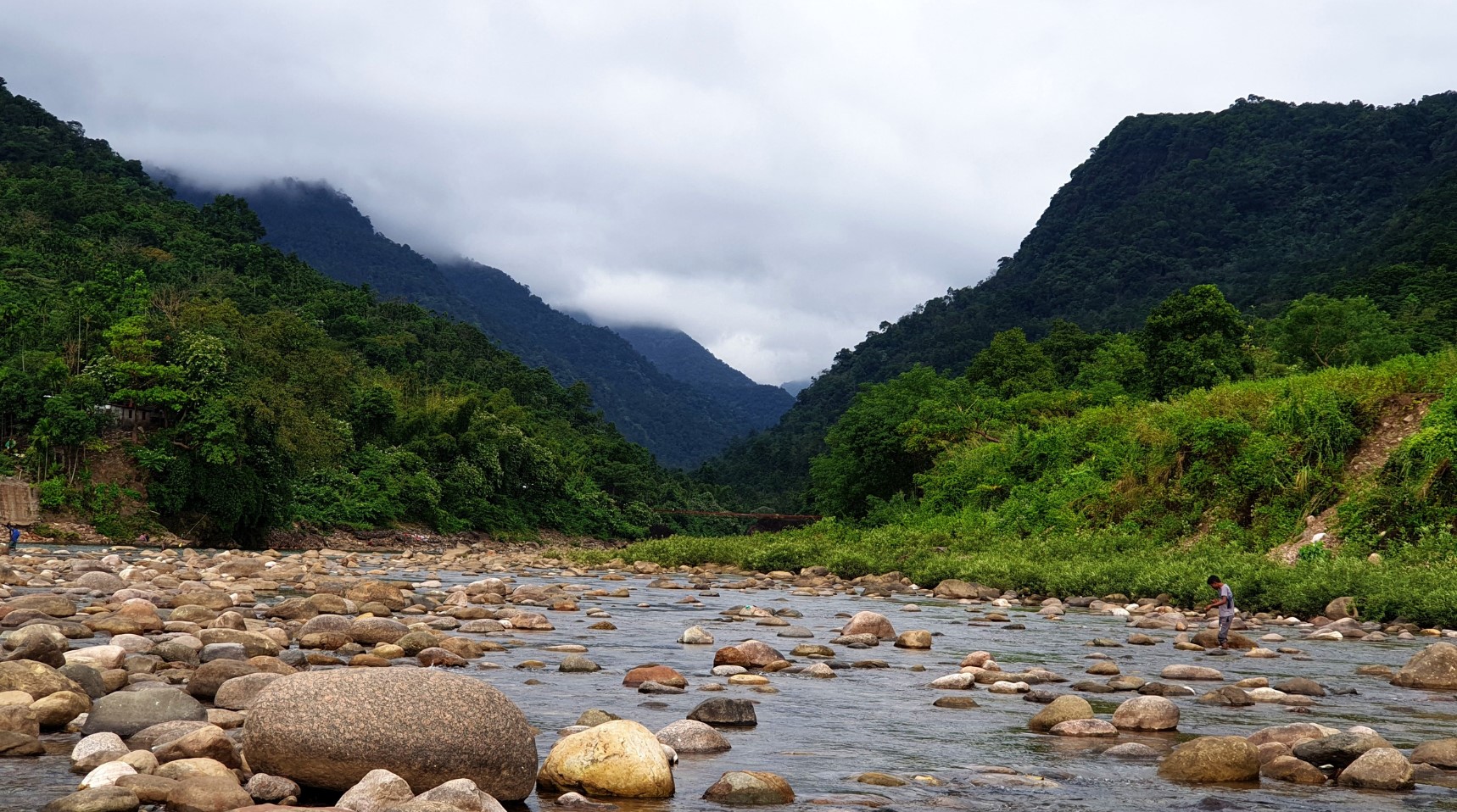
Jaflong: The Land Of Hills And Waterfalls
Jaflong, nestled in the Sylhet division of Bangladesh, is a hidden gem of natural beauty. This small town, surrounded by hills and forests, is known for its pristine waterfalls and crystal-clear river. Jaflong is a popular tourist destination in Bangladesh, attracting visitors who are looking for a quiet, peaceful and scenic getaway.
One of the main attractions in Jaflong is its waterfall. The waterfall cascades down a hill, surrounded by lush green forests and winding paths. Visitors can take a dip in the cool waters, take a leisurely stroll by the river or simply sit and admire the view. The waterfall is at its most picturesque during the rainy season, when the water flows down in full force, creating a mesmerizing spectacle.
The surrounding hills are also a popular destination for visitors. The hills are covered in thick forests, and visitors can take a hike, explore the flora and fauna and enjoy the panoramic views. The hills are home to a number of tribal communities, with their unique culture and traditions. Visitors can experience the local way of life, and learn about the culture and traditions of the communities that call the hills their home.
- Another must-see attraction in Jaflong is the Tamabil-Lauachara National Park. The park is home to a number of endangered species, including tigers, elephants and gibbons. Visitors can take a safari through the park, and enjoy the wildlife in its natural habitat. The park also has a number of trails, for visitors who want to explore the park on foot.
- Visitors to Jaflong can also take a trip to the nearby Khasia village. The village is known for its unique culture, and visitors can experience the local way of life. The village has its own language, customs and traditions, and visitors can learn about the Khasia way of life.
Jaflong, with its natural beauty and peaceful surroundings, is a destination that should not be missed. Visitors can enjoy the scenic beauty, experience the local culture, and simply relax and unwind in the lap of nature.
The Peaceful Village Of Sonargaon: A Glimpse Of Rural Life İn Bangladesh
Sonargaon, a small village located in the Narayanganj district of Bangladesh, is known for its peaceful ambience and picturesque beauty. The village is a true hidden gem, offering visitors a unique glimpse into traditional rural life in Bangladesh. From the moment you arrive, you will be struck by the serenity and beauty of this tiny village, which provides a stark contrast to the hustle and bustle of the big cities in Bangladesh.
If you’re looking for an authentic cultural experience in Bangladesh, a visit to Sonargaon is a must. The village is steeped in history and culture, with many ancient buildings and monuments that reflect the country’s rich past. The village has a number of beautiful temples and mosques, which showcase the intricate architecture and design of traditional Bengali buildings.
- One of the most impressive monuments in Sonargaon is the Panam City:
- A 19th century merchant city, it was once an important center of trade and commerce.
- Today, the city is a popular destination for tourists who come to admire its beautiful architecture and learn about its rich history.
- Other popular tourist attractions in the village include the Folk Art and Craft Museum and the Sonargaon Museum.
In addition to its rich history and culture, Sonargaon is also renowned for its natural beauty. The village is surrounded by lush green fields and forests, which offer a perfect escape from the city’s hustle and bustle. Visitors can take a leisurely stroll through the village’s winding streets, or explore the nearby forests and waterfalls.
| Getting to Sonargaon: | Best time to visit: |
|---|---|
| Sonargaon is located about 23 km from Dhaka, the capital of Bangladesh. It can be reached by car or bus, and the journey takes around 1-2 hours depending on traffic conditions. | The best time to visit Sonargaon is between October and March when the weather is moderate and pleasant. The monsoon season (June-September) should be avoided as the village is prone to flooding during this time. |
Overall, a visit to Sonargaon is a must-do for anyone who wants to experience the beauty and tranquility of rural life in Bangladesh. Whether you’re a history buff, a nature lover, or simply looking to escape the city’s chaos, Sonargaon is the perfect destination for you.
Bangladesh Today: A Rapidly Developing Country With Unlimited Opportunities.
Bangladesh is a country that has undergone tremendous change in recent years. Despite facing a number of challenges, it is rapidly developing and is seen as a country with unlimited opportunities. With a population of 160 million people, it is the 8th most populous country in the world. Although agriculture remains the largest sector of the economy, the country is making significant strides in the areas of technology, manufacturing, and services.
Bangladesh has made impressive progress in poverty reduction in recent years. This has been achieved through a number of initiatives, including a focus on agriculture and rural development, as well as the expansion of the garment industry. The country has also made significant strides in areas such as health and education, with improvements in access to healthcare and education services for millions of people.
Despite the challenges that the country faces, there are many reasons to be optimistic about Bangladesh’s future. With a young and growing population, a strategic location at the crossroads of Asia, and a rich cultural heritage, Bangladesh is well positioned to continue on its path towards economic growth and development. As the country continues to invest in infrastructure, education, and technology, it is poised to become an increasingly important player in the global economy in the years to come.
- Some of the key features of Bangladesh’s economy include:
- GDP growth rate of 8.15% in 2019
- One of the fastest growing economies in the world
- Strong focus on poverty reduction, with significant progress made in recent years
- Growing manufacturing, technology, and services sectors
Bangladesh is a country with unlimited opportunities. As the country continues to develop and grow, there will be many opportunities for businesses, entrepreneurs, and investors. With a growing middle class and a large, young and educated workforce, Bangladesh is poised to become an important player in the global economy in the years to come.